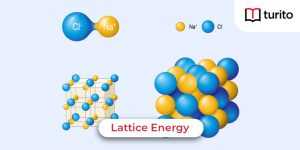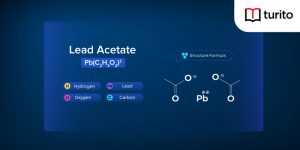Atomic Structure
With further advances, scientists have gained a deep understanding of nature and its atomic structure. Until the start of the twentieth century, they performed many experiments. They got information about the tiny particles which made an atom.The existence of an atom has been known to the world for a long time. Atoms are the fundamental components of matter. The word ‘atom’ is obtained from the Greek word ‘a-tomio’, which channels ‘indivisible’ or ‘uncuttable.’
This article will familiarise you with the atomic structure and various atomic models.
What is Atomic Structure?
Atoms are the smallest part of matter which cannot be divided further into parts. The atomic structure contains subatomic particles called electrons, protons, and neutrons. Outside the nucleus are energy levels, which contain one or more electrons.
Therefore, what is atomic structure is the study of these tiny or subatomic particles, energy levels, the discovery of these particles and their arrangement in an atom, and all the fundamental information about the discovery of the atom.
Characteristics of Three Fundamental Particles of an Atom
| Particulate | Electron | Proton | Neutron |
| Nature of particles | Negatively charged | Positively charged | Neutral |
| Location | Outside the nucleus | Inside the nucleus | Inside the nucleus |
| Discovered by | J.J. Thomson | E. Goldstein | James Chadwick |
| Actual mass | 9.11 x 10-28 g | 1.672 x 10-24 g | 1.675 x 10-24 g |
| Charge | -1.602 x 10-19 coulombs | +1.602 x 10-19 coulombs | 0 |
Dalton’s Atomic Theory
In 1808, a British school teacher, John Dalton, proposed a few postulates which give the scientific basis to an atomic structure. His postulates are:
- Matter consists of indivisible atoms.
- Atoms of similar elements have similar properties, including mass.
- Atoms of distinguished elements differ in mass.
- Compounds are devised when atoms of distinguished elements are mixed in a fixed ratio.
- During a chemical reaction, atoms are neither created nor destroyed. They transformed from one form to another.
His theory successfully explained the Laws of chemical reactions. But there were many drawbacks to his postulates that resulted in the neglect of Dalton’s atomic theory.
Thomson Atomic Model
In 1897, J.J. Thomson proposed this model. He performed a cathode ray experiment which led to the discovery of electrons. He showed the existence of electrons in an atom by passing electricity at high voltage through gas at very low pressure. The purpose of applying high electric voltage is to supply electrical energy to break the atoms of the gas into smaller particles.
The formation of cathode rays in his experiment proved that one of the particles in all the atoms is the negatively charged electron.
Later, in 1898, he proposed that an atom holds a spherical shape in which the positive charge is equally distributed. The electrons are inserted into it to give the most stable charge-balanced atomic structure.
Although this model could explain the overall neutrality in the structure of an atom, it was not compatible with the results of the later experiments.
Discovery of Nucleus to Rutherford Atomic Theory
After the discovery of electrons, protons, and neutrons, in 1911, Rutherford performed the famous ⍺-particle scattering experiment, which led to the discovery of a small positively charged nucleus in the atom containing all protons and neutrons.
Rutherford observes that
- Most of the ⍺-particles pass through the sheet without suffering any deflection.
- Some of the ⍺-particles were deflected at small angles from the centre. He named this centre the nucleus.
- Very few ⍺-particles bounced back or deflected at nearly 180°. Hence, it was concluded that electrons revolve around the nucleus in their orbits.
His model showed some drawbacks, which led to rejection.
- It does not explain the stability of atoms.
- It does not explain the distribution of electrons around the nucleus.
- It failed to describe certain fixed lines in the hydrogen spectrum.
Quantum Theory of Radiation
Max Planck proposed this theory. Max Planck’s phenomenon also explained even the idea of energy distribution in the black body in 1900. According to this theory:
- Radiant energy is emitted or absorbed and disrupted in the form of quantum.
- Each quantum is related to the definite amount of energy depending upon the frequency of radiation, i.e., E = h𝞾
- The body can emit or absorb energy only in whole-number multiples of quantum, i.e., 𝞾, 1h𝞾, 2h𝞾, etc.
Photoelectric Effect
In some of his famous experiments, sir J.J.Thomson observed that when a beam of light of sufficiently high frequency strikes the surface of a metal, electrons are ejected from the metal. This phenomenon is known as the photoelectric effect.
Bohr’s Theory of Hydrogen Atom
In 1913, Neils Bohr was the first to explain the general features of hydrogen atomic structure and its spectrum. The postulates of Bohr’s theory are:
- The electrons rotate around the positively charged nucleus in the orbits of definite radii.
- The nucleus of the atom is responsible for the entire mass of the atom.
- The permitted orbits are those for which the angular momentum of an electron is an integral multiple of h/2𝞹.
- When electrons move in their orbits, they do not radiate energy.
- The energy is sucked up when the electron jumps from a lower to a higher orbit and scatters when the electron jumps from a higher to a lower orbit.
Although Bohr’s model proposed many favourable points, his theory has some limitations.
- It does not describe the spectra of atoms having other than one electron.
- It could not explain the multiple energy levels of nearly similar energy for each principal quantum number, n.
- There is no explanation for the principle of quantisation of angular momentum.
- It does not explain the splitting of spectral lines into a group of finer lines under the influence of magnetic and electric fields.
- He assumed that an electron is located at a fixed distance from the nucleus and rotates with a fixed velocity. It is against Heisenberg’s uncertainty principle.
Heisenberg’s Uncertainty Principle
According to this principle, precisely determining a small particle’s momentum and position simultaneously is impossible.
Mathematically,
Δx x Δpx ≥ (h/ 4𝞹)
This principle rules out the existence of the definite paths of electrons and other similar particles. This principle is significant only for the motion of microscopic objects and is negligible for that of macroscopic objects.
Quantum Numbers
Four types of quantum numbers are necessary to understand the spectra and definite position of electrons in an atom.
- Principle quantum number (n): It determines the energy shell in which the electron revolves around the nucleus.
- Magnetic quantum number (m): It gives the location of the orbit of revolution of the electron in the subshell.
- Azimuthal or angular quantum number (l): It gives the subshell to which the electron belongs.
- Spin quantum number (s): It explains the direction of the spin of electrons.
Distribution of Electrons
To arrange and distribute the electrons following principles are required:
1. Aufbau Principle:
According to this principle, ‘electrons are added progressively to the various orbitals in the order of escalating energy starting with the orbital of lowest energy.’ The order is
1s 2s3s 3p 4s 4p…….
2. Pauli’s Exclusion Principle:
This principle stated that ‘no two electrons in the same atom will have the same values of all quantum numbers.’
That means that if two electrons in an atom have the same values of n, l, and m, they must have different values of s.
3. Hund’s Rule of Maximum Multiplicity:
According to Hund’s rule, ‘single electrons will have the same spins.’ It means electron pairing in an orbital does not occur till each orbital of the same sublevel contains one electron.
Conclusion
From the above article, you are now well-versed in the atomic structure. It is clear that with the contribution of many scientists, we understand what atomic structure is today.
Frequently Asked Questions
Q1. What are the common characteristics of every wave?
Answer: There are five common characteristics of every wave shown:
- Wavelength: The distance between two adjacent troughs or crests.
- Frequency: The number of times a wave passes through a given point in one second.
- Velocity: The distance travelled by the wave in one second.
- Wave number: It is interpreted as the number of waves per cm equal to the inverse wavelength.
- Amplitude: The height of a wave’s crest or depth of the trough.
Q2. What are the sources of electromagnetic radiation?
Answer: Some common sources of electromagnetic radiation are:
- Radio Waves are generated from AC currents of high frequencies.
- Special generators produce microwaves.
- Incandescent objects emit IR.
- Visible radiations are produced from stars, arc lamps, hot filaments in an electric bulb, etc.
- UV radiations are present in sun rays.
- X- rays are produced by placing a metal obstacle in the path of a moving stream of electrons.
- Cosmic rays originate from outer space.
- ℽ-rays are produced from nuclei of radioactive atoms.
Q3. What are atomic numbers and mass numbers?
Answer: The number of positive unit charges carried by the nucleus of an atom is called the atomic number of the element. In other words, an atomic number equals the number of protons in the atom’s nucleus.
- Atomic number (Z) = Number of electrons = Number of protons.
- The sum of the number of neutrons and protons in an atom’s nucleus is called the atom’s mass number.
- Mass number (A) = Number of protons (Z) + Number of neutrons.

Relevant Articles
Butanoic Acid – Structure, Properties, Uses
Butanoic Acid The carboxylic acid, butanoic acid, has the structural …
Butanoic Acid – Structure, Properties, Uses Read More »
Read More >>What is Iodoform? Characteristics and Uses
Iodoform The formula for Iodoform is CHI3. It is biotic …
What is Iodoform? Characteristics and Uses Read More »
Read More >>Lattice Energy – Explanation, Factors & Formulas
Lattice Energy Lattice energy evaluates the intensity of the ionic …
Lattice Energy – Explanation, Factors & Formulas Read More »
Read More >>Lead Acetate – Definition, Properties, Uses
Lead Acetate Have you ever licked lipstick when you sketch …
Lead Acetate – Definition, Properties, Uses Read More »
Read More >>




















Comments: